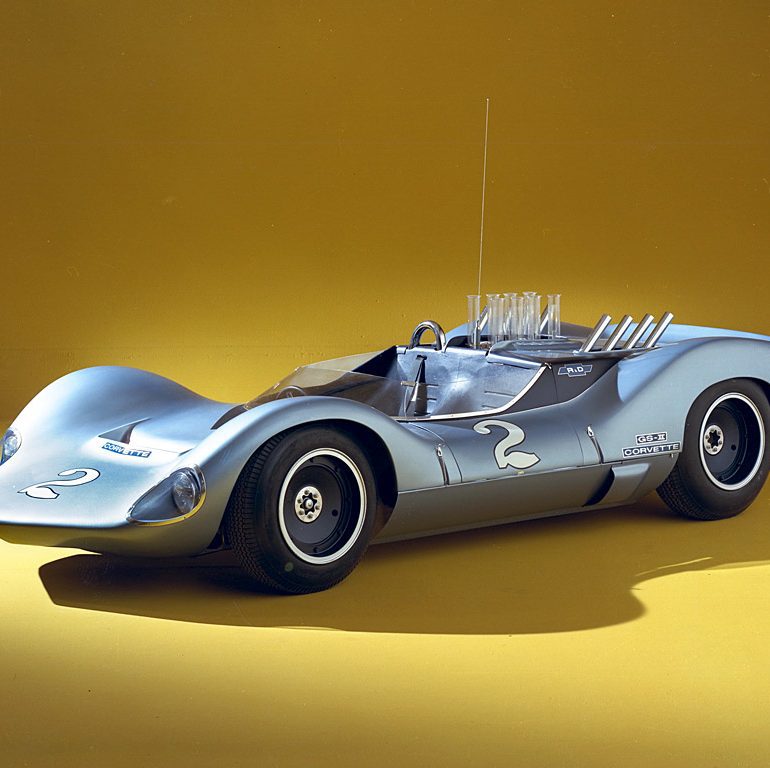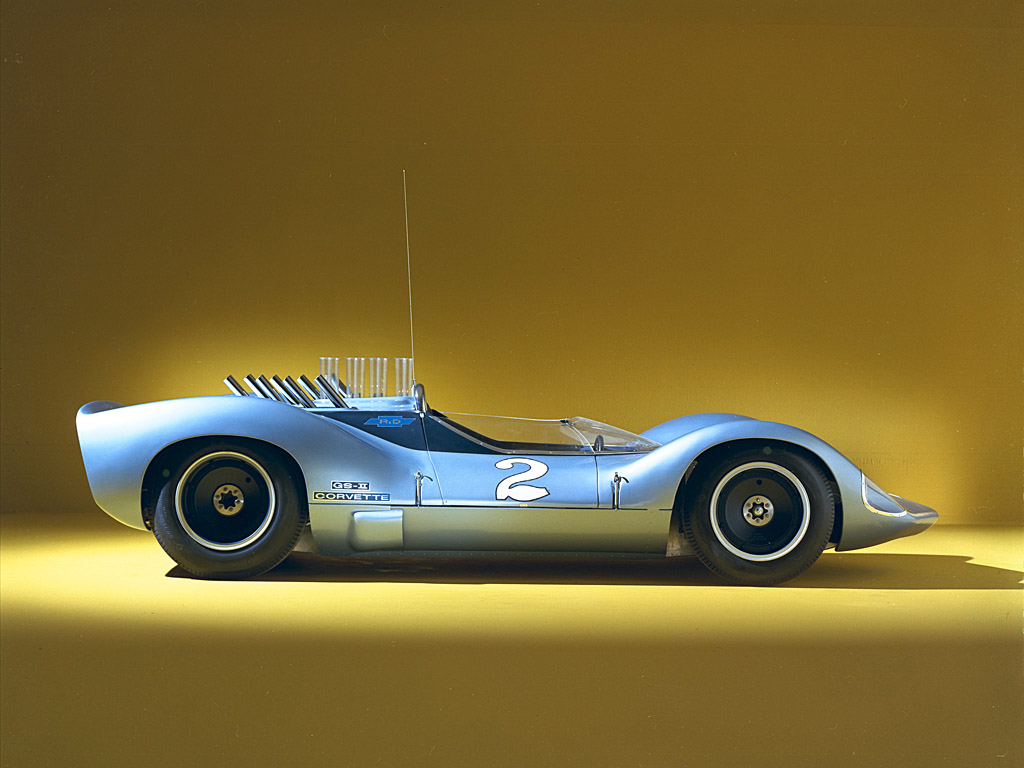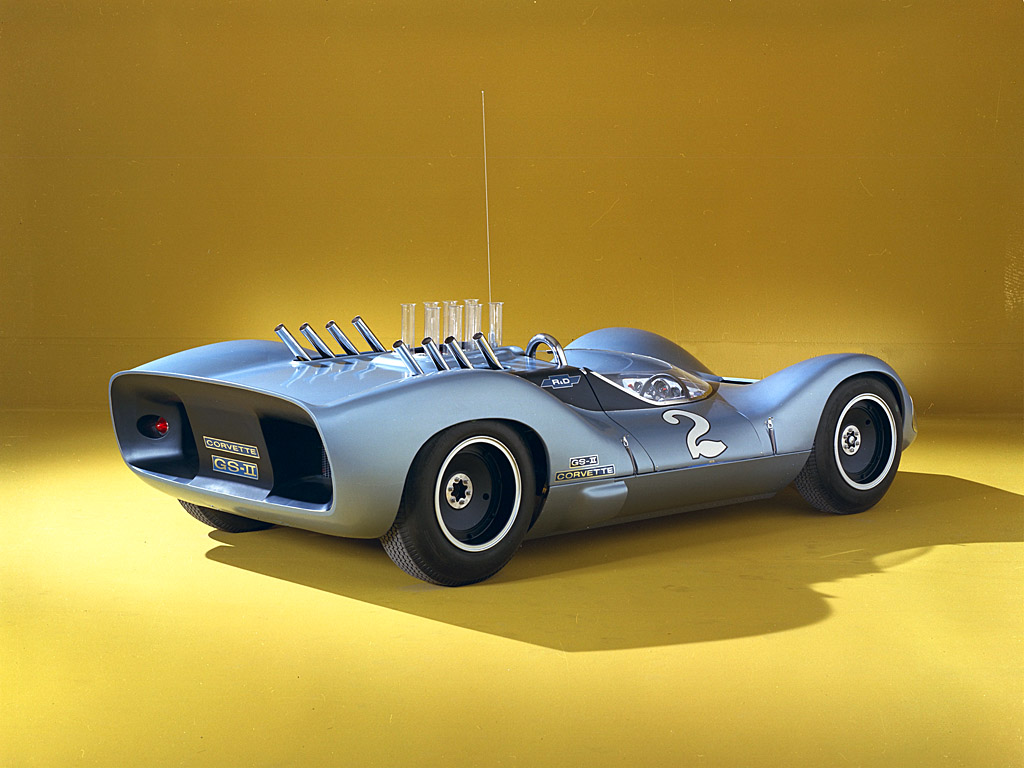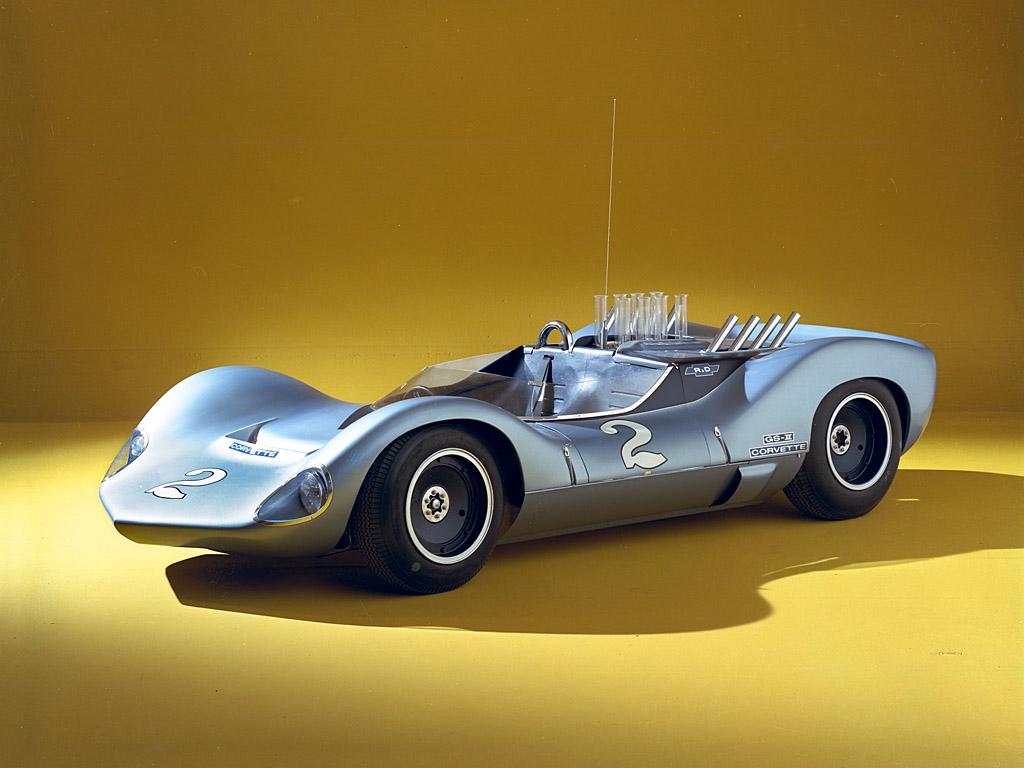1963 Chevrolet Corvette GS-II
After the American Manufacturer’s Association (AMA) ban on direct factory involvement in competition, companies like Chevrolet were limited to research and design vehicles that assisted private teams. This kind of relationship was formed between Chevrolet and Chaparral and that’s precisely where the GS-II fits in.
Despite being labeled as a Corvette by GM marketing, the GS-II was an experimental race car that paralleled Chaparral development. The project was headed by F.J. Winchell, vice-president of GM engineering, who wanted to build a mid-engine Sportscar that would out perform and become an extension of the Grand Sport (GS-I) Corvettes. He probably named it Corvette to avoid Chevrolet bureaucracy while at the same time using it to test highly advanced racecar engineering.
The design was loosely based around the Monza GT concept car which used Corvair running gear in Chevrolet’s first monocoque design. But unlike the Monza GT, the GS-II took the theme several steps further by using light-gauge steel, an experimental 327 V8 engine that was all-aluminum and a one-speed transmission.
Having Chevrolet research and design at his fingertips, Jim Hall at Chaparral embraced many of the new technologies from Chevrolet and the GS-II. This meant both companies had a symbiotic relationship that was hard to manage since Chevrolet was not supposed to be directly involved in the first place. The fact that the Chaparral 2C had a remarkable resemblance to the GS-II was no coincidence.
The GS-II was initially built around a steel monocoque chassis and an extremely thin fibreglass body designed by Larry Shinoda. The chassis was later replaced by a very lightweight aluminum counterpart and became known as the GS-IIb. Chaparral modified the aluminum tub design for his 2C which many drivers didn’t trust due to its extremely low weight. However, it retained so much rigidity that Jim Hall nicknamed it the ‘eyeball jiggler’.
The one-speed automatic transmission was developed by engineer Jerry Mrlik at Chevrolet to help deliver monstrous power to tires that could barely cope. It used a torque converter and a single-speed transaxle to send varying amounts of power the rear wheels. The same unit was also used in the Chaparral 2C which won to everyone’s surprise the first few times out! These automatics, in both one and two speed configuration, were very reliable and helped Chaparral win 16 major American road races in 1965.
To test various wheel/tire combinations, the wheels were also special on the GS-II . Chevrolet devised a multi-piece design that could be more easily changed without having to mount cumbersome race tires. The solid disc design overheated the brakes in testing and were adopted by Chaparral for a very limited time.
Suspension for the GS-II came from another car called the Suspension Test Vehicle (STV). This crude test mule lent its developments including a fully independent front and rear setup.
The results achieved with the GS-II were phenomenal. Engineer Jim Musser did a test run at the proving grounds that reached 198 mph. This was in large part due to the cars low weight. At just 1450 lbs, the large block V8 had no problem propelling the GS-II.
Sitting somewhere between a sports car and a race car, the GS-II never left its experimental role. It was followed up by the GS-III an experimental open-wheeled car that was a possible Indianapolis contender. Beyond the GS-II, several more mid-engine Corvette prototypes were made, but none were suitable enough for production, nor as radical as the GS-II.
Story by Supercars.net
Bibliography
McLellan, Dave. Corvette Engineering. Bentley Publishers: 2003
Montgomery, Andrew. Corvette, The Definitive Guide. Easton Press: 2006.
Van Valkenburg, Paul. Chevrolet-Racing. SAE: 2000.
In Detail
| type | Concept / Prototype Car |
| engine | All-Aluminum V8 |
| displacement | 5359 cc / 327 in³ |
| bore | 101.6 mm / 4 in |
| stroke | 82.55 mm / 3.25 in |
| body / frame | Thin Fibreglass over Aluminum Tub |
| driven wheels | RWD |
| wheel type | Multi-Piece |
| curb weight | 658 kg / 1450 lbs |
| transmission | One-Speed Automatic |
| top speed | ~318.7 kph / 198 mph |







